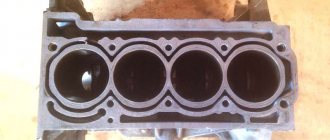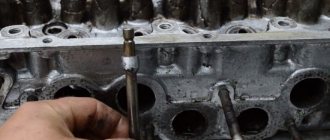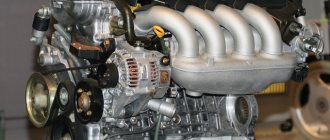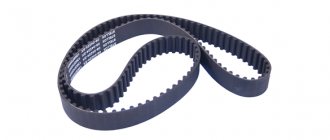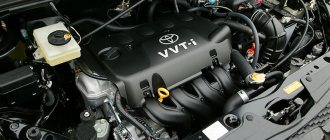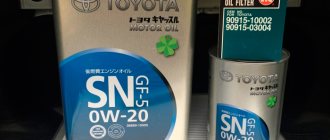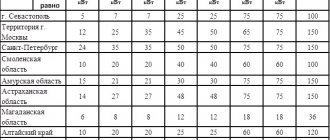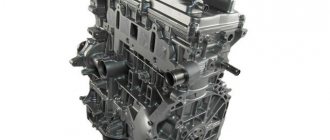23-Toyota-Mirai_zr-12_15
Toyota Mirai.
Made in Japan. From 66,000 euros in Germany. Toyota Mirai. Made in Japan. From 66,000 euros in Germany.
A liter of diesel for one euro? In Hamburg? Fantastic! I remember very well that a year ago, when I was traveling by car in Europe, diesel fuel was significantly more expensive. But here is another gas station - and also a euro per liter... It’s just that in Germany, unlike Russia, prices for petroleum products are quickly rewritten following the price of oil, not only up, but also down.
It’s even a pity that I don’t need either diesel or gasoline today - after all, I’m driving the world’s first production fuel cell car around the outskirts of Hamburg. To refuel the futuristic Toyota Mirai sedan, only hydrogen is required.
UNDER PRESSURE
Everything happens exactly as at a regular gas station. Through the terminal I pay for the required amount of fuel, attach the plug to the filler neck, and within three to four minutes hydrogen fills the fuel tanks. These are two high-pressure cylinders (700 bar) made of carbon fiber with a three-layer structure: a 60-liter one is located under the rear seat, and the other (62.4 liters) is closer to the rear suspension. The total capacity is five kilograms of hydrogen.
Interior
The inside of the car is like part of a spaceship - a lot of buttons, screens, sensors and all sorts of other stuff. Interestingly, the Japanese did not dare to spend money on developing two interior layout options - for the European and for the domestic market. They solved the problem of rearranging the steering wheel very simply by placing all the important information instruments in the middle of the torpedo.
The panel itself is placed close to the windshield and stretched across its entire width. Further from it there is a massive on-board computer, which is equipped with a built-in navigator function. Below it there is another display. And they are separated by two wide air ducts. The same ones are duplicated on the sides of the mirrors, only with a chrome trim in the corner. The steering wheel is also equipped with remote control buttons. There is no gear knob in the cabin - most likely, a CVT or automatic transmission is used. The speakers are located in the doors, as are the power window control buttons. The steering wheel has a comfortable grip. In general, the interior layout is very ergonomic. And even despite the mass of buttons (especially since half of them are touch-sensitive), it is not overloaded with unnecessary elements and to some extent seems ascetic.
03-Toyota-Mirai_zr-12_15
Toyota Mirai.
The interior is high quality, airy; ergonomics, despite the exotic panel architecture, are not bad. I was pleasantly pleased with the presence of auto-closers for all windows. And the thoughtfulness of the multimedia system with touch buttons was unpleasantly disappointing. Toyota Mirai. The interior is high quality, airy; ergonomics, despite the exotic panel architecture, are not bad. I was pleasantly pleased with the presence of auto-closers for all windows. And the thoughtfulness of the multimedia system with touch buttons was unpleasantly disappointing.
Options and prices for Toyota Mirai 2021, 2nd generation
The hydrogen Toyota Mirai comes in 2 main trim levels: G and Z. The standard G version is described above. The price in Russia will be approximately 4,700,000 rubles.
The Z package is complemented by:
- optional installation of 20th wheels;
- panoramic roof;
- head-up display;
- ventilation and heated seats;
- QI charging device;
- intelligent parking assistance (IPA);
- AFS system.
The cost of Toyota Mirai in this configuration will be 5,185,000 rubles.
01-Toyota-Mirai_zr-12_15
Toyota Mirai.
In two days I did not meet anyone who was delighted with the appearance of the car. However, there is no arguing about tastes. At least the Mirai's appearance is memorable. Toyota Mirai. In two days I did not meet anyone who was delighted with the appearance of the car. However, there is no arguing about tastes. At least the Mirai's appearance is memorable.
When filling up “to full”, exactly a kilogram of hydrogen fit into the tanks of my car. Before refueling, the trip computer promised 260 km of travel. After - 330 km. But I'm sure I can drive all five hundred!
Design
The appearance of the new Toyota Mirai is very impressive. The massive aggressive “front” with a harsh wide bumper and slanted headlights immediately catches your eye. The radiator grille is perhaps the smallest and most insignificant element in the exterior.
But even on such a small piece of plastic, the Japanese managed to place their signature emblem, made in chrome style. The car has a good glass area. This is especially true for the windshield. The driver will not feel “dead spots”, since all events around him are now visible in full view. The body has both angular and smoothed, aerodynamic features. All this makes the appearance of the sedan very fresh, modern and unique.
13-Toyota-Mirai_zr-12_15
Toyota Mirai.
The two-seater rear sofa is luxurious: ample knee room, individual heating. Toyota Mirai. The two-seater rear sofa is luxurious: ample knee room, individual heating.
Thanks to the low center of gravity, the handling of the large sedan is very reliable. But there is no courage. You need to drive calmly, enjoying the smoothness and silence. Only during intense acceleration does a subtle trolleybus rumble break into the cabin.
The two-tone interior is pleasing to the eye and comfortable. Despite the exotic architecture of the panel, I do not experience any inconvenience - the ergonomics are fine, and the equipment even includes heated rear seats and steering wheel. The only disappointment was the incredibly slow multimedia system with touch buttons.
I drove literally five kilometers along the autobahn. I pulled off onto a secondary road, turned on Eco mode and drove off at an extremely measured pace. Now imagine my surprise when, after 65 km, the trip computer again began to show the “pre-refueling” range: 260 km. It turns out, despite my efforts, on a kilogram of hydrogen I managed to last only the 70 km promised by the electronics - and in real conditions, the mileage on full tanks will be about 350 km. Not five hundred.
Toyota Mirai 2021 interior
The interior equipment of the Toyota Mirai is reminiscent of the latest generation Prius model. This can be seen in the photo. Functional and comfortable.
Dashboard
The instrument panel has a single 8-inch screen. A clear image allows you to monitor the speedometer, battery status and mileage.
Mirai's dashboard
Center console
The top of the console is upholstered in leather, and a huge multimedia display is located closer to the steering wheel. Below are long ventilation deflectors, a joystick for switching driving modes and a block of function keys.
Center console
Multimedia
The LCD display of the infotainment system has a diagonal of 12.3 inches. Allows you to control the audio system, navigation, and other functions; makes it possible to synchronize with other devices.
Multimedia
Trunk
The luggage compartment volume is 321 liters.
Trunk
Seats
The cabin has two rows of seats for 5 people. The front individual seats received good lateral support and headrests. Adjustable in several directions. The back row combines 3 seats into a sofa that folds down.
Seats
The interior dimensions of the Toyota Mirai are as follows: length – 1.805 m, width – 1.595 m, height – 1.135 m.
Mirai
1. Power control unit.
2. Nickel-metal hydride battery (secondary battery). 3. Synchronous electric motor. 4. DC to AC inverter. 5. Hybrid installation on hydrogen fuel cells. 6. High pressure hydrogen tanks. In a fuel cell battery, hydrogen from the cylinders reacts with oxygen entering through the air intakes. The resulting electric current passes through an inverter, where it is converted from DC to AC, and the voltage increases to 650 V. A synchronous electric motor drives the front wheels; A "secondary" battery located at the rear of the car collects energy from regenerative braking and shares it during hard acceleration. 1. Power control unit. 2. Nickel-metal hydride battery (secondary battery). 3. Synchronous electric motor. 4. DC to AC inverter. 5. Hybrid installation on hydrogen fuel cells. 6. High pressure hydrogen tanks. In a fuel cell battery, hydrogen from the cylinders reacts with oxygen entering through the air intakes. The resulting electric current passes through an inverter, where it is converted from DC to AC, and the voltage increases to 650 V. A synchronous electric motor drives the front wheels; A "secondary" battery located at the rear of the car collects energy from regenerative braking and shares it during hard acceleration.
If one day we do drive into a bright hydrogen future, it will not be in a sedan with the beautiful name Mirai, but behind the wheel of a more affordable and efficient car. But the achievement of the Japanese, who launched the world's first hydrogen car into production, deserves applause. And, as it should be on especially solemn occasions, I give them a standing ovation.
Story
Mirai_Antuan
The official discoverer of the chemical element occupying the first cell of the periodic table is the French chemist and naturalist Antoine Laurent Lavoisier. In 1783, he established that hydrogen is part of water. The first piston engine powered by hydrogen was built by the French-Swiss inventor Francois Isaac de Rivaz in 1807. He obtained hydrogen by electrolysis of water. And the exhaust gases were a mixture of water vapor and nitrogen.
Competitor
Honda-FCV-Concept-rear-three-quarter
Honda Clarity Fuel Cell.
Honda Clarity Fuel Cell.
At the end of October, Honda showed a small-scale hydrogen sedan, the Honda Clarity Fuel Cell. The principle of operation is exactly the same as that of Mirai. The power of the power plant is about 100 kW (135 hp), the declared range is 700 km, and refueling time does not exceed three minutes. Production is scheduled to begin in spring 2021.
Let's get excited behind the wheel of the Toyota Mirai - the first production hydrogen car
